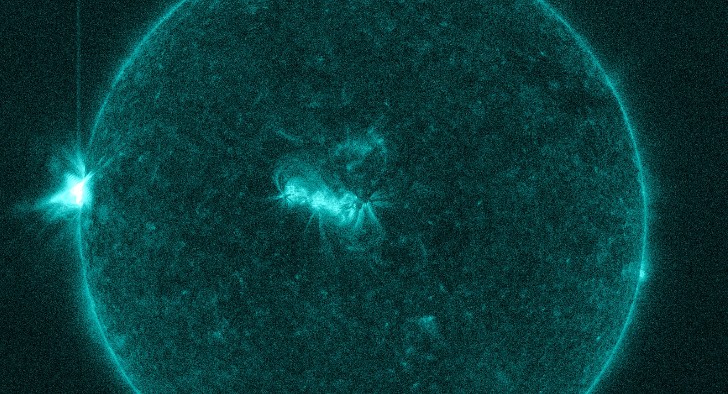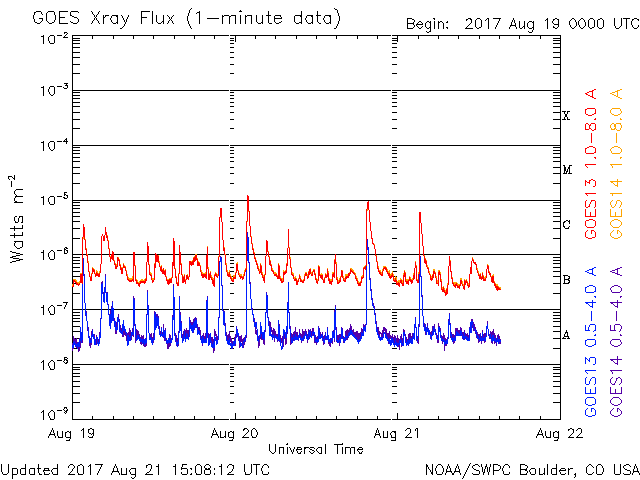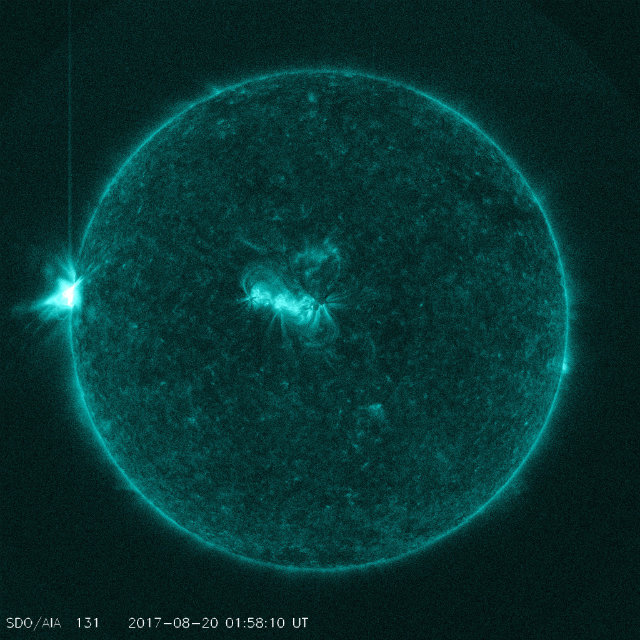Solar flare measuring M1.1 erupts from Region 2672

A moderately strong solar flare measuring M1.1 erupted from new Region 2672 (beta) at 01:52 UTC on August 20, 2017. The event started at 01:36 and ended at 02:03 UTC.
Solar activity was at moderate levels on August 20 due to an M1 flare from an emerging region on the eastern limb. A coronal mass ejection (CME) was not produced during this event, but even if it was, it most likely wouldn't be Earth-directed due to the location of this region.
The region was also responsible for multiple C-class flare activity over the past 48 hours. At 21:55 UTC on August 19, it produced a C7.0 solar flare with an associated Type II radio sweep with an estimated speed of 928 km/s. Coronal dimming was observed to the north of the Region in SDO/AIA 193 imagery beginning at 21:43 UTC on August 19 suggesting a CME was lifting off. Its largest C-class flare so far was C9.4 at 19:39 UTC on August 20.
The second sunspot group – Region 2671 – also produced several C-class flares of which the largest so far was C2.9 at 07:50 UTC on August 20.
Today's solar activity is mostly marked by B-class flaring from both regions. The strongest flare so far was C5.9 from Region 2672 at 03:16 UTC.


The greater than 2 MeV electron flux was at high levels during the past 24 hours, with a peak flux of 36 300 pfu observed at 11:55 UTC on August 21. It is expected to reach high levels again over the next three days. The greater than 10 MeV proton flux was at background levels.
Solar wind parameters continued to show influences from a positive polarity CH HSS, although with a declining trend. Total field strength ranged between 1 and 5 nT while the Bz component dropped to a low value of -3 nT. The phi angle remained in a predominately positive orientation with brief fluctuations into negative territory. The solar wind environment is expected to remain enhanced through the rest of the day. A gradual return to a more nominal wind regime is expected on August 22 and 23 as CH HSS influences slowly wane.
The geomagnetic field was at quiet to unsettled levels due to continued positive polarity CH HSS influence. It is expected to be at quiet to unsettled levels with isolated periods of active conditions on August 21 and 22. A return to mostly quiet conditions are expected on August 23, with isolated unsettled periods possible.
Solar activity is expected to be at low levels during the next three days (August 21 – 23) with a chance (25%) of M-class flares.
Featured ima: M1.1 solar flare on August 20, 2017. Credit: NASA SDO/AIA 131

Commenting rules and guidelines
We value the thoughts and opinions of our readers and welcome healthy discussions on our website. In order to maintain a respectful and positive community, we ask that all commenters follow these rules:
We reserve the right to remove any comments that violate these rules. By commenting on our website, you agree to abide by these guidelines. Thank you for helping to create a positive and welcoming environment for all.